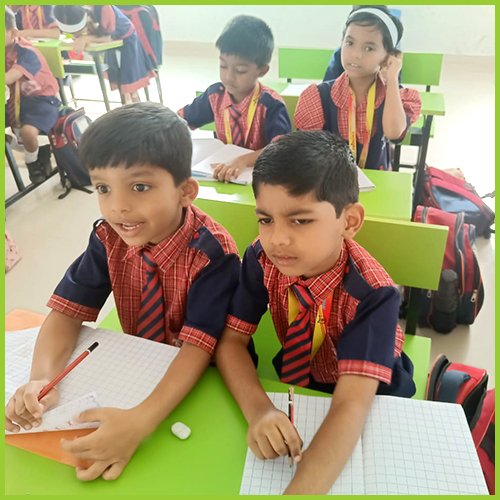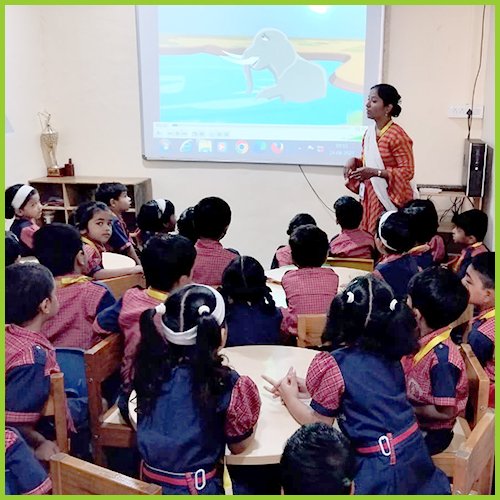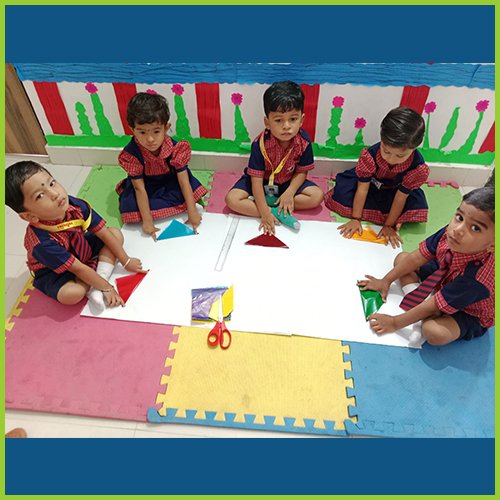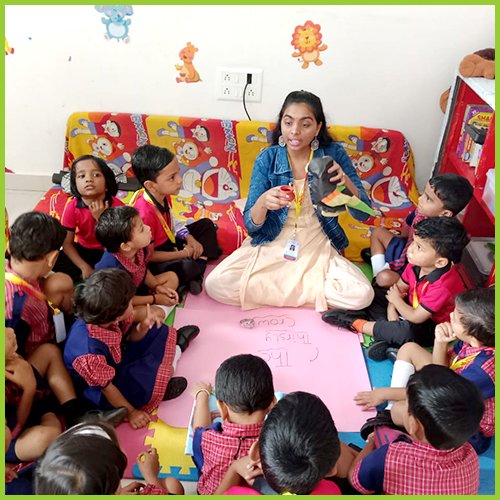
Traditional Classroom Learning
- In traditional classroom settings, teachers use lectures, textbooks, and written assignments to impart knowledge to children.
- Students learn through direct instruction, self-assessment and participate in class discussions and activities.
Interactive & Activity based Learning:
- Interactive learning methods encourage student engagement through discussions, group activities, and hands-on projects.
- Teachers facilitate interactive sessions where students collaborate, share ideas, and actively participate in the learning process.


Technology Integration
- Modern schools often integrate technology into learning, using computers, tablets, educational software, and online
resources here we are dealing with smart board and digital books where QR codes have generated in the books for integrated videos related to that chapter. - Technology enhances learning experiences, allowing students to access multimedia content, interactive simulations, and online research materials.
Project-Based Learning (PBL)
- PBL involves students working on real-world projects that require critical thinking, problem-solving, and collaboration.
Students investigate, create, and present their projects, leading to a deeper understanding of the subject matter.


Experiential Learning
- Experiential learning emphasizes learning through direct experiences and reflection. Activities such as field trips, experiments, and simulations provide students with hands-on experiences that enhance their understanding of concepts.
Collaborative Learning:
- Collaborative learning encourages students to work together on tasks, projects, or assignments.
- Collaborative activities promote teamwork, communication skills, and a shared understanding of the subject matter.

Assessment and Feedback:
- Proxima use various assessment methods, including tests, quizzes, projects, and presentations, to evaluate student learning.
- Constructive feedback from teachers help students understand their strengths and areas for improvement, facilitating continuous learning.
- These learning methods are often combined and adapted based on the subject matter, grade level, and individual student needs, creating a dynamic and engaging learning environment in schools.
